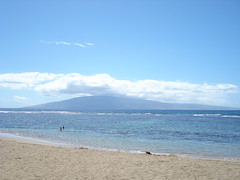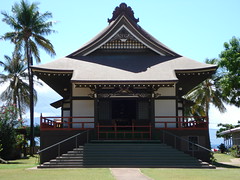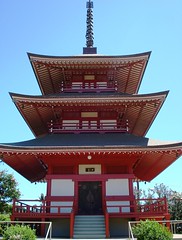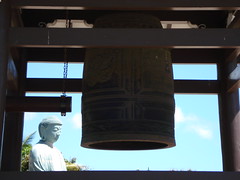HONOLULU, Hawaii, March 21, 2008 (ENS) - One of Hawaii's longest-standing water disputes was settled this week when the state Commission on Water Resources Management decided in a unanimous vote to designate four waterways on the island of Maui as a "water management area" under the state Water Code.
The designation, effective once public notice is published, puts the commission in direct control of these waterways, known by their Hawaiian name, Na Wai 'Eha - the Four Waters.
Since the plantation era, two companies have controlled most of the stream flows of these four waters - Hawaiian Commercial & Sugar, a division of Alexander & Baldwin, which operates one of the last sugar plantations in Hawaii on Maui's central plain; and Wailuku Water Company, formerly the Wailuku Sugar plantation, which sold off all its former agricultural lands for development and is now in the business of selling water.
The commission's ruling came on a petition filed in December 2006 by public interest environmental law firm Earthjustice on behalf of two Maui grassroots community groups, Hui o Na Wai 'Eha and the Maui Tomorrow Foundation.
The four waterways - the Waikapu, 'Iao and Waiehu Streams and the Waihe'e River - are perennial streams that traditionally supported a native aquatic ecosystem and the largest continuous area of taro production in the Hawaiian Islands.
The groundwater of the 'Iao Aquifer, which underlies much of four waters area, serves as the principal source of drinking water for Maui.
But large-scale diversions by sugar plantations have drained the streams dry for over a century and continue unchecked despite the modern decline of the sugar industry.
According to the ruling, water use from now on will be allowed only by commission permit.
"For too long, a few companies have treated Na Wai 'Eha stream flows as their private property, while public instream uses have gone ignored," said John Duey, longtime resident of the 'Iao Valley and president of Hui o Na Wai 'Eha.
"Now the Water Commission will be able to monitor and regulate water uses and ensure they are truly in the public interest," he said.
While present users of the four waterways have a one year window to apply for "existing uses," by law those uses are not grandfathered in.
During the commission's multi-step process extending over a year, numerous parties expressed their strong support for state control, including the Office of Hawaiian Affairs, and the former and present mayors and water directors, and the entire County Council of the County of Maui.
"We're proud to be a part of this collective effort to achieve the first-ever designation of streams for public management," said Irene Bowie, executive director of Maui Tomorrow. "Hopefully this will lead to similar progress for the many other streams and communities statewide needing proper stewardship."
The decision to designate Na Wai 'Eha is the first time the state has designated streams as a water management area. Previous designations have concerned only groundwater.
"Designation is a critical step in public management of the precious waters of Na Wai 'Eha," said Isaac Moriwake, an attorney with Earthjustice. "But it is only an initial step. We must remain vigilant to ensure that the many community members living in these valleys are empowered to have their water needs recognized, and that the precious waters of Na Wai 'Eha are used justly for the benefit of all the people, not just a handful of private interests."







